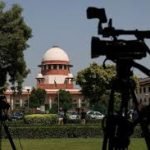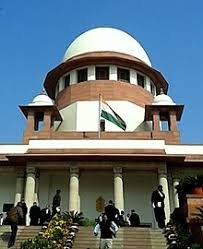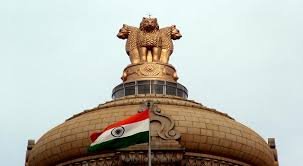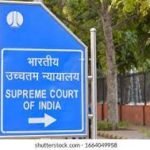The matters before the Supreme Court involved various issues regarding the emoluments of High Court Judges. The primary concerns included:
- The non-grant of full pension to High Court Judges whose prior service in the District Judiciary was not fully considered.
- The denial of full pension due to a “break-in-service” for a period between a Judge’s retirement from the District Judiciary and their assumption of charge as a High Court Judge.
- Whether Judges who entered the State Judiciary after the New Pension Scheme (NPS) came into effect were entitled to pension under the High Court Judges (Salaries and Conditions of Service) Act, 1954 (HCJ Act) or the NPS.
- The entitlement of an Additional Judge of the High Court to receive a full pension.
- The denial of gratuity and family pension to the widow or family members of deceased Additional Judges, especially when the minimum qualifying service might not have been completed.
- The denial of Provident Fund benefits to Judges appointed after the NPS came into effect.
Law Involved
The core legal provisions examined by the Court were:
- Article 221 of the Constitution of India: This Article stipulates that the salaries, allowances, leave, and pensions of High Court Judges are determined by Parliament through law.
- High Court Judges (Salaries and Conditions of Service) Act, 1954 (HCJ Act): This central statute defines “Judge” and “pension” (which includes gratuity and other death/retirement benefits). It contains specific sections crucial to the case:
◦Section 14: Outlines the pension payable to Judges.
Section 15: Provides for counting prior pensionable service held under the Union or a State for pension calculation.
Section 17A: Deals with family pensions and gratuities for Judges who die in service or after retirement, including provisions for minimum qualifying service for gratuity.
- The First Schedule of the HCJ Act: Specifies the pension amounts for Chief Justices (Part I) and other Judges (Part I & III), along with provisions for special additional pensions.
- New Pension Scheme (NPS): A contributory pension scheme, whose applicability to High Court Judges was a point of contention.
The judgment also referenced several judicial precedents, including previous decisions in M.L. Jain and Another v. Union of India, Kuldip Singh v. Union of India, and D. P. Ramakrishnam Raju v. Union of India and Others, which established principles regarding pension calculation and non-discrimination for Judges elevated from the Bar or the District Judiciary.
Reasoning
The Supreme Court’s reasoning was fundamentally rooted in the principles of non-discrimination and ensuring “one rank one pension” for all High Court Judges, regardless of their prior service background (District Judiciary or Bar) or the timing of their appointment relative to the New Pension Scheme.
1.Consideration of District Judiciary Service: The Court held that service rendered in the District Judiciary by a Judge who is subsequently appointed to the High Court must be reckoned for pension purposes. The pension calculation should be based on the last drawn salary as a High Court Judge, emphasizing that this prevents discrimination based on the source of appointment.
2.Addressing “Break-in-Service”: The Court found that a brief “break-in-service” between a Judge’s retirement from the District Judiciary and their swearing-in as a High Court Judge does not justify the denial of full pension. The date of assuming office as a High Court Judge should be the basis for pension calculation.
3.Applicability of Old Pension Scheme vs. NPS: The Court clarified that the constitutional scheme for High Court Judges under Article 221, which provides for their salaries and allowances from the Consolidated Fund, overrides general civil service schemes like the NPS. Therefore, Judges, even if they entered the State Judiciary after the NPS came into effect (1st April 2004), are entitled to the full pension benefits under the HCJ Act (the old pension scheme), and any contributions made under NPS should be refunded by the State.
4.Parity for Additional Judges: The Court determined that Additional Judges of the High Court should be treated similarly to Permanent Judges regarding their pay and service conditions. Consequently, they are entitled to the same amount of basic pension as other Judges.
5.Family Pension and Gratuity: The denial of family pension and gratuity to widows/family members of deceased Additional Judges was deemed unsustainable. The Court noted that the definition of “pension” in the HCJ Act includes gratuity. Furthermore, to ensure family benefits, it directed that for calculating gratuity, 10 years should be added to the actual service period if necessary to meet the minimum qualifying service requirements under Section 17A of the HCJ Act.
Holding
The Supreme Court disposed of the writ petitions with the following directions, aiming to ensure uniformity and fairness in judicial pensions:
- The Union of India is directed to pay the full pension of Rs. 15,00,000/- per annum to a retired Chief Justice of a High Court and Rs. 13,50,000/- per annum to a retired Judge of a High Court.
- The principle of “One Rank One Pension” shall be applied to all retired High Court Judges, irrespective of their source of entry (District Judiciary or Bar) or the number of years served, ensuring they receive the full pension amount.
- Service rendered as an Additional Judge and in the District Judiciary must be included for the purpose of pension calculation.
- For Judges who entered the District Judiciary after the New Pension Scheme (NPS) came into force, they are entitled to the full pension under the HCJ Act, and the contributions made under NPS shall be refunded to them by the respective States along with any accrued dividends.
- Family pension and gratuity shall be paid to the widow or family members of a Judge of the High Court who dies in harness, irrespective of whether the Judge was Permanent or Additional. For gratuity calculation, 10 years shall be added to the period of service if needed to meet the minimum qualifying service under Section 17A of the HCJ Act.
- All arrears of allowances payable to retired Judges or their families shall be calculated with 6% interest per annum from the date of their entitlement until actual payment, with payment to be made within six months.
In Re: Refixation Of Pension Considering Service Period In District Judiciary And High Court
Supreme Court: 2025 INSC 726: (DoJ 19-05-2025)








